1. Introduction & Equipment
Camera, Lens, Sound Recorder, Lights, Neutral Density acetates, Daylight and colour acetates, Clapper Board, chalk, pens, shot lists, still camera for continuity. Shooting schedules. Boom Pole, Microphones, external power source, batteries, flash cards. |
|
Microphones
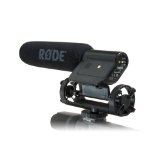 Camera Hot Shoe Microphone Camera Hot Shoe Microphone
There are many different microphones on the market. They range massively in their quality and price. Many hundreds of pounds are needed for a very high quality microphone. We don't have that kind of money. You can just use the ZOOM's inbuilt microphones or you can purchase a range of medium-priced microphones that will jack into it.
Some microphones are sold which will fit onto your camera's hot-shoe. I have used these and they are no good. They pick up your breathing and the noise of your fingers on the camera.
|

|
However, they are still good low priced microphones and can be used by adapting them to fit a boom pole. The pole telescopes out, is lightweight and allows someone to hold the microphone very close to the actors. Part of the pole has a foam wrap so the boom handler grips it there and doesn't transmit his hand sounds along the pole and into the microphone.
|
|
Shotgun Microphones.
These pick up sound more one-directionally. They still pick up side sounds but less so that an ordinary microphone. A good one is dear. I tried cheap Chinese ones, but they are no good and inject high levels of white circuit noise into the audio signal. You can't filter it out of the final sound track!
Cost: £150 - £ 600
|
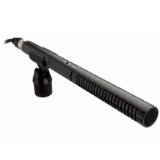
|
You don't need much DIY skill to buy some cheap thin metal, drill a hole or two through it, and attach the microphone to the bracket and the bracket to a boom pole or stand.
Microphone Wind Shield.
You'll need one of these little furry things when recording sound outside. Even a light breeze will sound like a roar with an unshielded microphone.
Lapel Radio Microphones - Uhf Dual Lavalier System
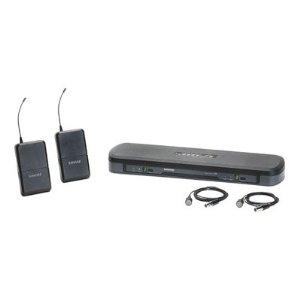 |
These are useful when filming people talking at a distance: two people seen walking along a road, for example. You don't want to film a boom operator walking behind them holding a microphone over their heads. The whole kit normally consists of two microphones the size of jacket buttons, two transmitter packs that clip to belts beneath shirts and skirts, and a radio receiving unit with Pre-amp.
Actors have to be careful not to rustle their clothes too much or the microphones will pick up the noise.
The receiving unit needs mains power so you need to think about this when filming outside. I have included a solution below regarding external power supplies. Cost: £150 - £400
|
Stereo / Mono
Most dialogue is recorded in mono. You can use a stereo microphone and just combine the tracks into mono in the editing stake of your film. You should try and record ambient noise and sound effects (clothes rustling, footsteps, etc) on another microphone and another recording channel on the zoom so you can mix them in later during editing.
Lights
You will be amazed at how much light you need to record a scene well. When filming outside in the day, the sun itself can be a real problem, casting shadows where you don't want them and over-lighting features you wish to show clearly. Light needs to be continually managed. We need reflectors, lights, and shades, color filters, and neutral density Gels to enable that management.
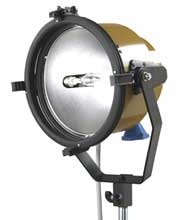 |
On the left is one of the lights movie makers use. It is known as a Blonde. This one throws out 2K Watts of light and heat. The standard lights ate called Blondes and Red Heads. They are Tungsten Halogen lights and they are absolutely useless in all filming circumstances, despite their wide-spread use in the movie industry.
The bulbs are expensive and blow too often. They are not waterproof and will not function outside in wet conditions. They are expensive and poorly constructed. My strong advice is not to use them.
|
I advise you to use another type of halogen light instead. These are the type often used by workmen. This one on the right is 2 x 500 Watts - the type I use along with smaller 400 Watt and 150 Watt ones. The only real issue is there are no barn doors to control the spread of light. Easy, use tin foil. Wrap a sheet around the outside of the light head and just bend the foil as you wish to focus the light spread. Warning: use heat proof gloves!
A Blonde or Redhead can set you back 130 to 400 UK pounds. The lights I use on the right will cost less than 40 pounds. The bulbs are cheaper and the lights are 100% waterproof and can be used in the rain. |
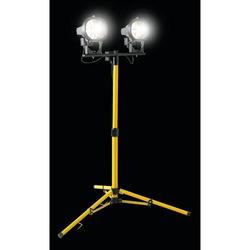
|
Of late, a range of lights are available which are effectively arrays of Light Emitting Diodes. I have not used these so I cannot comment on their usefulness. I think they may be useful as they do not produce the tremendous heat of Tungsten lights, but without experience of them, I don't know their advantages and disadvantages. I would speculate they may be useful as fill-in lights but probably lack the high intensity illumination required to light a scene properly.
Filming at Night
If you want to light stuff outside at night, you are in for a very big surprise. You need many lights and even then, once you place people or objects greater than a few yards away from a light, the drop-off values increase logarithmically and in no time at all - darkness again. Don't rely on your eyes, go put your camera out there at night and throw a light on something, you'll soon see.
I needed to light a caravan and a few people running around at night in the garden. We had so much power going out to 1000 watt lights (in the UK, that's a 40 AMP load), we were drawing enough current to threaten knocking out the house's 60 Amp fuse.
Lights are very hot and very dangerous. If an actor brushes against the lamp head or glass even for a second, they will receive a bad burn. Cables running to them create a safety hazard and a nuisance when framing a scene. You have to ensure they are not being filmed. Arrange cables so as not to fall across the path of actors moving around the scene and put hazard warning tape along the cables to make them more visible.
Any cables running outside should be through connection to an RCD, This will cut the power should any actor or crew member inadvertently come into contact with a live wire or faulty lamp part.
Colour Filters
Light comes out of Tungsten Halogen lamps at a temperature of 3200 degrees Kelvin. This is the kind of warm light you get inside your house with the room lights on. Daylight (Bluer) is around 5400 deg. K, and an overcast cloudy day is about 7000 deg.K.
|
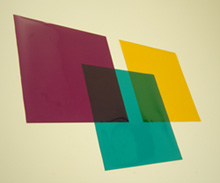
|
We use GELs, which are coloured acetates over the lights to change their colour and tight temperature. They withstand the heat of the light and do not burn or melt. The most commonly used GELs are Daylight filters which transforms that warm glow into more natural light.
We also use Neutral Density Gels to cover windows so that when filming through them from inside a property, we see the external details properly without the window glass glaring and wiping the details.
|
The Gels can be purchased as small squares or in long rolls. Prices vary and you should really shop around before purchasing any as some sellers really over-charge.
|
Light Reflectors.
Often when filming outside, sunlight will be strong on some of your scene and the rest will be all shadow. You control the re-illumination of shadow areas but putting some light in there, either by using a light or by reflecting natural light with a reflector.
You can also use white card, tin foil or any other improvised means to reflect light. It's not rocket science so don't go spending loads of money on reflectors. A couple which are portable is all you need and most times you will use them to put light into the shadows of faces, and small areas.
|
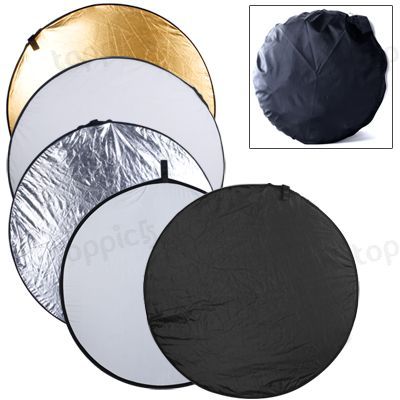
|
Find out more next month, in Chapter 1 part 3
|
|
|
 Camera Hot Shoe Microphone
Camera Hot Shoe Microphone





